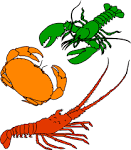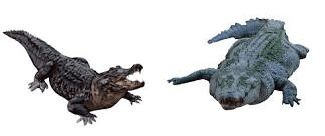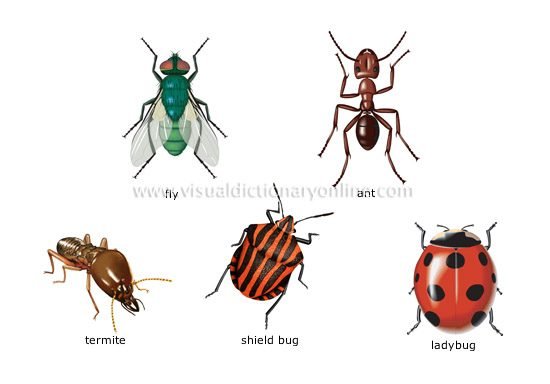Introduction
Every animal comes from another grown-up animal like itself.

Scientist have grouped animals into classes, or groups, that are alike in some important way. This makes it easy for the scientist to study animals.
Classify Animals – Observable Characteristics
You can observe the characteristics of all animals. Some observable characteristics for animals are: limbs, legs, wings, head, thorax, abdomen, external covering, backbone, teeth, etc. Scientist use these observable characteristics to group different species together. Animals within a group have similar observable characteristics.


Animals With Or Without Backbone
Animals can be classified as having a vertebrate (backbone) or not have a vertebrate. Vertebrate animals are mammals, birds, fish, reptiles, and amphibians. These animals are part of the phylum chordata. Invertebrates are animals without backbones, which are all part of the phylum arthropoda (arthropods). Invertebrates are arachnids (spiders) and insects.
Worksheet
Click the buttons below to download the PDF worksheets.

The sub-classes of animals
All living things come from other living things. Some come into the world right out of their mothers’ bodies; others hatch from an egg. They look more and more like their parents as they grow.
Therefore, living things can grow, move, breathe, and reproduce. Anything that cannot grow, move, breathe and reproduce are called nonliving things.

Living things are also sensitive to the environment. They eat and produce waste. The waste is also called excretion. However, plants and trees are also living; because they need air, water, and nutrients to live.
Discussion question:
Why do you think we need to know if something is living or nonliving?
Mammals
If an animal drinks milk from its mother’s body when it is a baby and has hair or fur on its body, it belongs to the mammal class. Mammals are warm bodied. Most mammal babies live inside their mothers before they are born. Most mammals are born with weak legs: such as kittens, puppies, and calves, The legs get stronger over time. Of all animals, mammals are the most chosen pets or helpers.

A calf stands is helped to its feet by its mother and other females when it is born. Within minutes they can stand on its own; and walk within one to two hours of birth. By two days they will be strong enough to join the rest of the herd.
Bird
If an animal has feathers, it is a bird. The feathers of a bird overlap, and so the bird can stretch out its wings and hold the air to fly. The tail also have feathers that overlap. This helps the bird to land. Birds have claws. Baby birds grows and feed within eggs; grows and then hatch from eggs. The bird uses a tiny tooth on its bill to get out the egg. Within days this tooth falls out.

Fish
If an animal has scales, have fins (usually on its back, belly, or sides), and gills (a slit in a fish’s head or behind its mouth), it is a fish. Some unusual fish are sea horse,eel, blind fish. A mother herring fish can lay more than 30,000 eggs at a time; a mother sardine as much as 100,000 eggs; and a mother turbot as much as 9,000,000 eggs. Some of these eggs never hatch. Some eggs wash ashore or eaten by other fish. Fish eggs don’t have hard shells, but are round and soft like jelly.


Reptile
If an animal has scaly skin, lays hard-shelled eggs on land, its a reptile. Reptiles are cold-blooded and are born on land. Some examples are snakes, lizards, crocodiles, and turtles. The reptile’s scaly skin helps keep moisture in the animal. Most reptiles have claws, Reptiles spend more time land than amphibians.


Alligators guard their eggs, however most reptiles leave their eggs when they are hatched.

Amphibian
If an animal lives in water when it is a baby and on land when it grows up, it is an amphibian. Amphibians lay soft (no shells) eggs. They must lay it water. They look like baby fish and breathe with gills as a baby. When an amphibian grows up, the gills disappear. They develop lungs to live on land. Amphibians are tied to the water. It does not have fur or feathers to protect is from drying out.

Frogs and toads look alike. A frog has smoother and wetter skin. Most toads have warts on their skin.


Arthropods
Arthropods include animals that have more than four, jointed legs. They are insects, spiders and crustaceans. These animals are different. If they want to taste something, they walk on it. They use their feelers to smell things. They also have hundreds of tiny eyes. They have six legs or eight legs or ten legs.
Insects are always in danger, so they have to find ways to protect themselves. They would fight back with their stinger, or let out a bad-smelling spray. Some have the ability to look like something else and so hide from other animals (camouflage) that could eat them. Some example of such animals are honeybees, ladybugs, stink bugs, walking stick, and monarch butterfly.

Spiders, though not a favourite, are helpful. They eat harmful insects.
Spiders, though not a favourite, are helpful. They eat harmful insects.

Crustaceans are cousins of the insects, but have ten legs and four feelers. Most live in water and breather with gills as fish do. Some are also very small; you will need a microscope to see them. Their body is covered with a tough shell. Some examples are crabs and lobsters. Most use their claws and it other two legs to catch food.

Animal Classification- Video
Arthropods Video.
Worksheets
Click the buttons below to download the PDF worksheets.
The worksheet has questions on the two main classes of animals, methods of separating mixtures, food and health.
Worksheets on living things and their attributes.
Worksheet with a reading passage: The Oldest Living Thing and comprehension questions.











